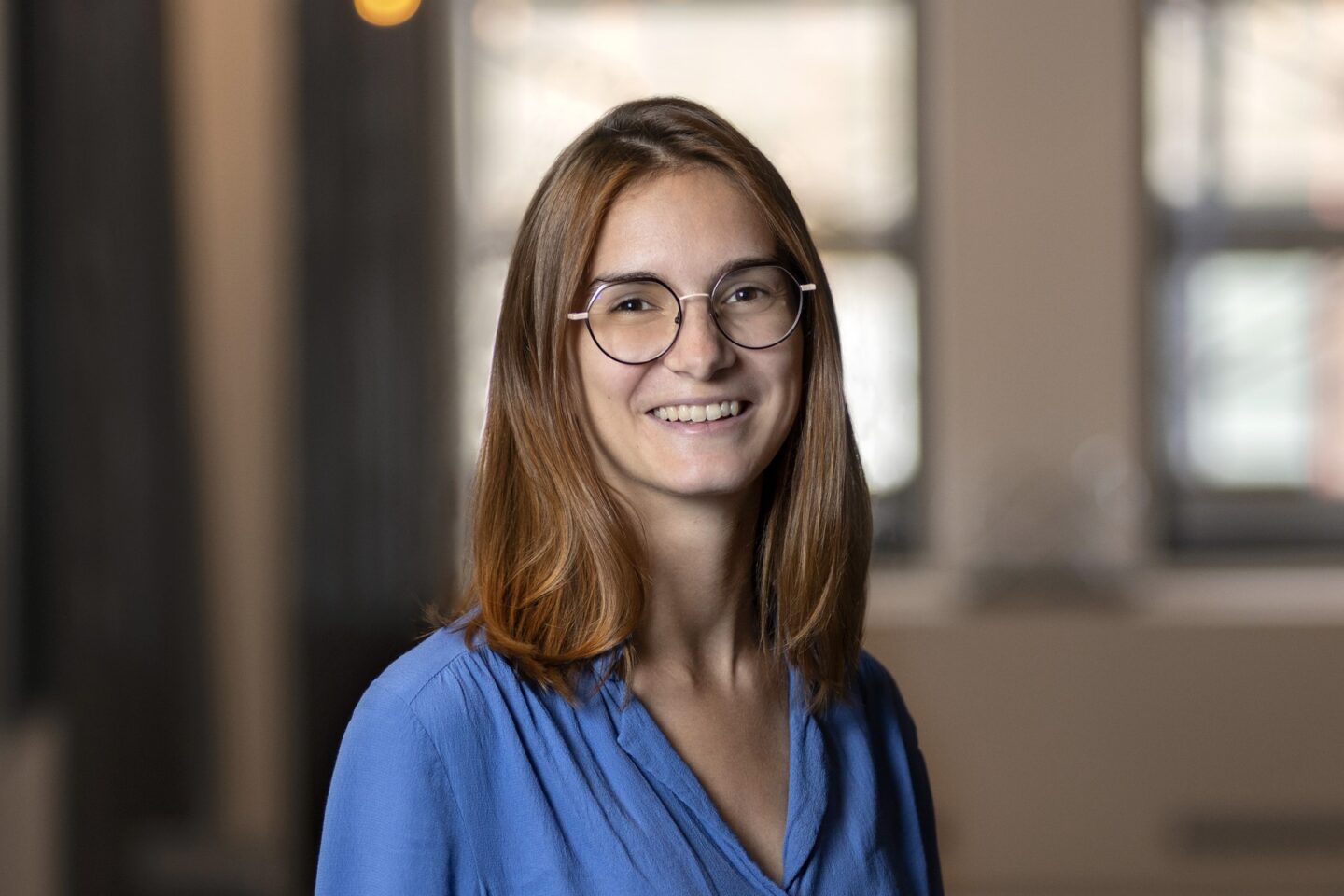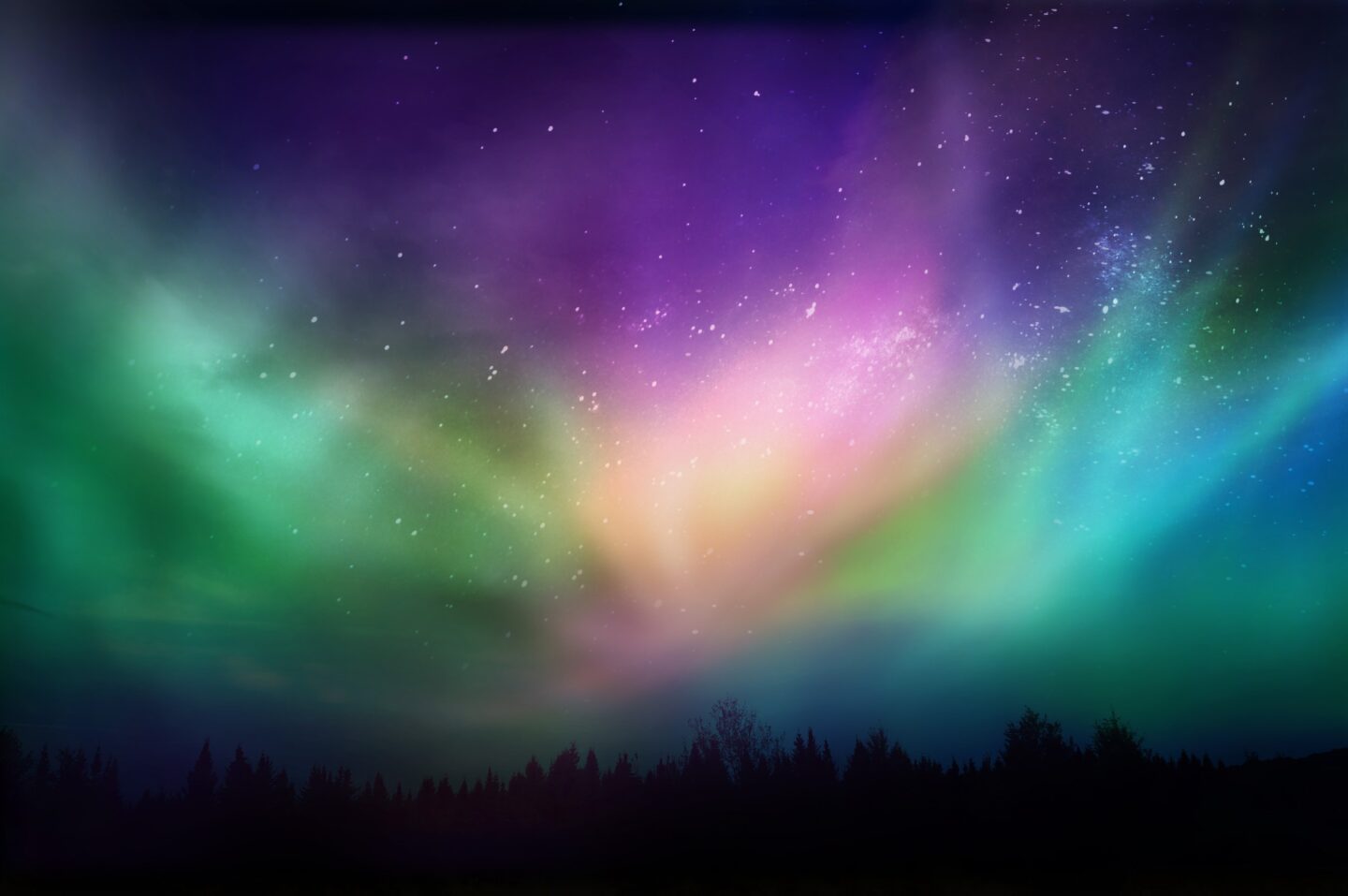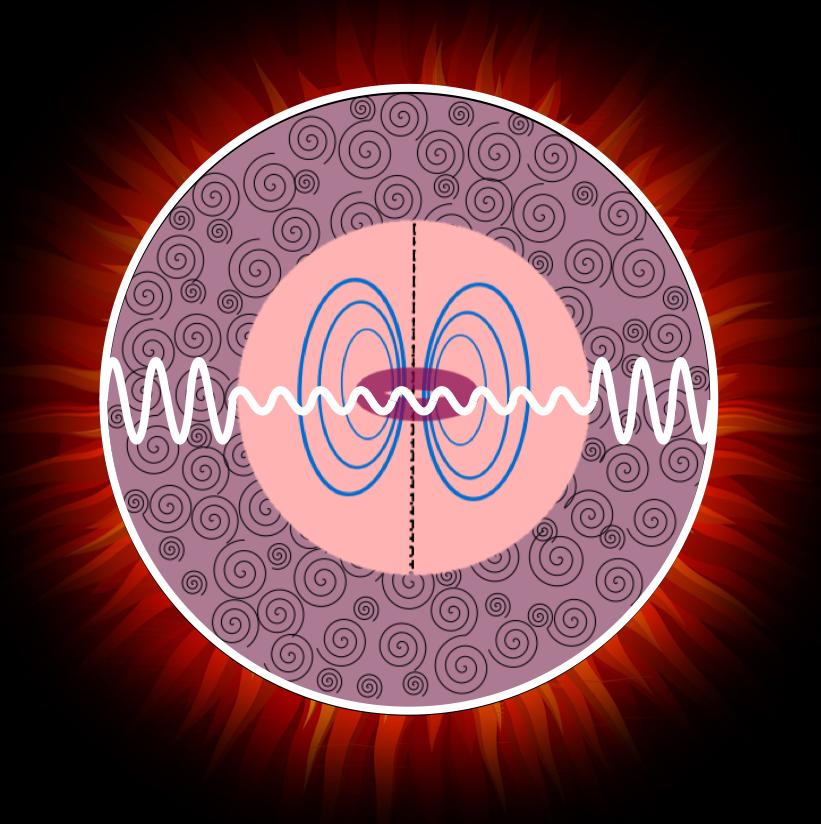February 23, 2023
First Astrophysics Professor at ISTA
Rising star Lisa Bugnet brings a new field of research to the Institute
The first in her field: Astrophysicist Lisa Bugnet joined the faculty at the Institute of Science and Technology Austria (ISTA). With her, the Institute opens up a new field as well as numerous opportunities for cross-disciplinary collaborations. Bugnet’s research applies asteroseismology to study the magnetic fields of stars, much like we use seismology to study Earth’s structure. With this, we can develop a better understanding of the age and evolution of stars—and even the universe as a whole.

When Lisa Bugnet was a child, her father, an amateur astrophotographer, let her look through the telescope he had set up at their home. The beautiful pictures fascinated her, but it was not enough. Bugnet recalls, “I wanted to know the what, why, and how behind the pictures.” She pursued her fascination to do just that. After completing her doctoral work at the French Alternative Energies and Atomic Energy Commission (CEA) in Paris, France, and two postdoctoral years at the prominent Flatiron Institute in New York City, USA, Bugnet joined the Institute of Science and Technology Austria (ISTA) as an assistant professor. For the young scientist, it is a unique opportunity in several aspects. “In most cases, an astrophysicist joins an established physics or astrophysics department. At ISTA, I have the resources to form my own group and the freedom to concentrate on precisely what interests me,” explains Bugnet. Moreover, the cross-disciplinary nature of the Institute opens up collaborations with areas atypical in astrophysics, such as earth and computer science.
Shaking up our understanding of the stars
The age of a star is not only crucially linked to its development; it also provides essential information on the evolution of associated galaxies and small and large astronomical structures. Recent observations show that rotation in stars is slower than predicted by current models, which affects estimates of their ages. Bugnet believes that stellar magnetic fields may be the key to explaining this—but first, we need a deeper understanding of those fields.

Earth has its own magnetic field: the stunning Northern Lights are just one of its visible effects. Similarly, many of the stars we see above us—including our Sun—have magnetic fields as well, but there we lack the deep understanding to incorporate them into stellar evolution models. This is where asteroseismology, a key aspect of Bugnet’s research, comes into play. Just as seismology is the study of earthquakes and uses waves to understand the composition and processes of the Earth’s various layers, asteroseismology uses the oscillations of “starquakes” to reveal the internal properties of stars. Scientists have already been able to describe the internal structure and temperature of stars using these methods, now Bugnet will apply asteroseismology to examine stellar magnetic fields. At this time, her focus is on red giants, low-mass stars in the late stages of their evolution. Because of the contracted cores of these stars, multiple types of waves arise, allowing Bugnet to study the magnetic fields in the inner and outer layers of the star.

Data from space
Space-based exoplanet-finding missions provide the essential data for Bugnet’s research. The most important of these is NASA’s Kepler mission. In the future, valuable data will be gathered by the European Space Agency’s PLATO project. Bugnet is already involved with this soon-to-be-launched mission, and takes part in the development of the scientific pipeline for data preparation and processing. With these international databases at her fingertips, Bugnet applies modeling, machine learning, and theory to push her research forward. “All I really need to dive into stars and the universe’s history is my computer.”
A “stellar” addition to the faculty
ISTA President Martin Hetzer warmly welcomes the new assistant professor: “With Lisa Bugnet’s appointment, we welcome not only our first astrophysicist, but also an exceptional scientist whose work may deeply impact our understanding of the stars, including our own Sun.” A second astrophysicist, Jorryt Matthee, will join the Institute as an assistant professor in September of 2023. His work focuses on the astrophysics of galaxies, large-scale structures that will complement Bugnet’s star-based research. The Institute is actively recruiting additional astrophysicists. Already on campus and also with an eye on the skies is Assistant Professor Bingqing Cheng, whose group Computational Materials Science uses a data-driven approach to chemistry in extraterrestrial—and other—settings.



